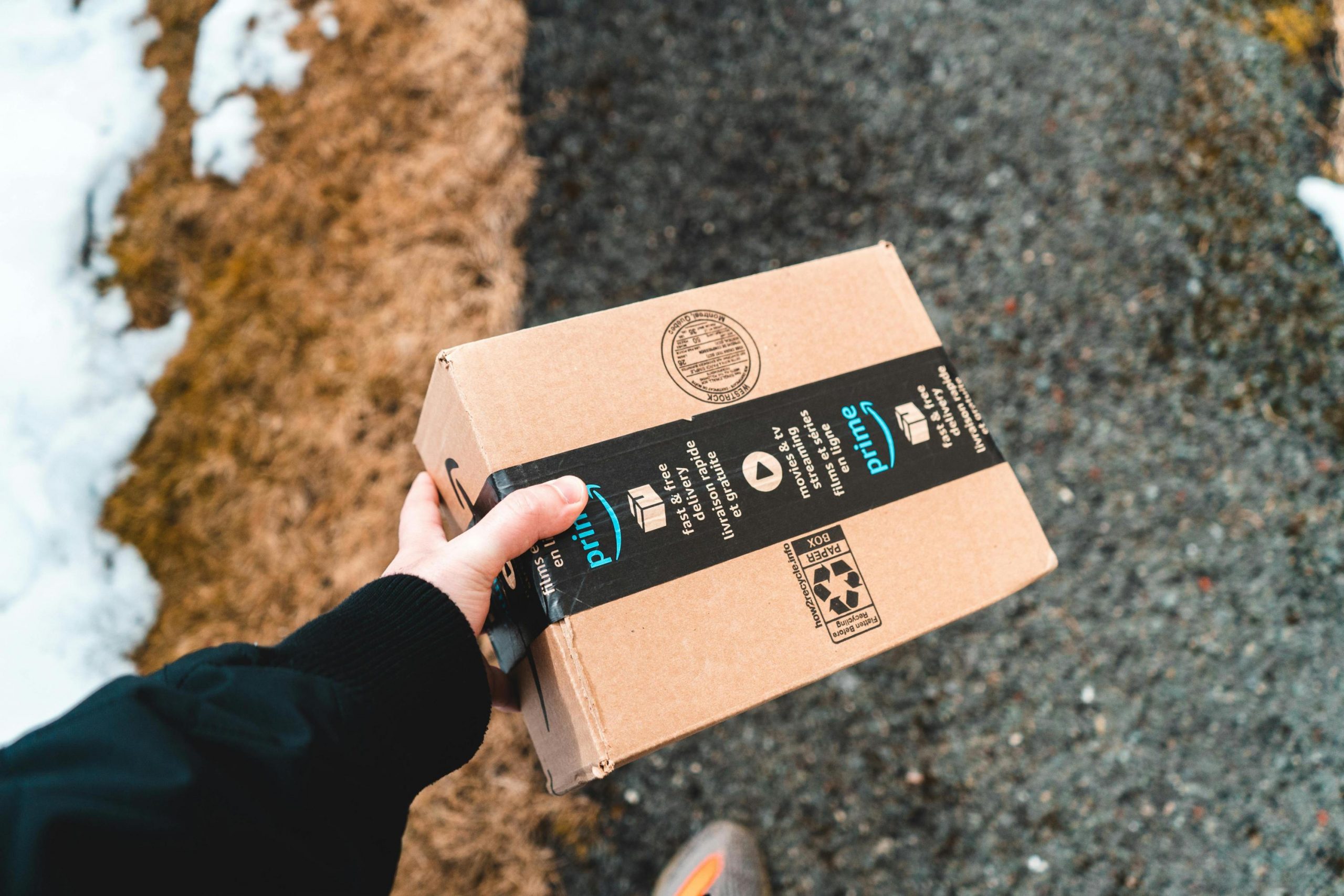
 Amazon is one of the world’s largest online marketplaces, offering millions of products from sellers all over the world. But with such a huge number of listings, many shoppers wonder: Does Amazon sell fake products? The short answer is yes, counterfeits can appear on Amazon, especially from third-party sellers. While Amazon has strict policies and tools to limit fake items, no online marketplace is completely free from them.
Amazon is one of the world’s largest online marketplaces, offering millions of products from sellers all over the world. But with such a huge number of listings, many shoppers wonder: Does Amazon sell fake products? The short answer is yes, counterfeits can appear on Amazon, especially from third-party sellers. While Amazon has strict policies and tools to limit fake items, no online marketplace is completely free from them.
This guide breaks down how to spot fake products, where they come from, how Amazon protects buyers, and what to do if you end up with a counterfeit item. Everything is written in simple language so you can shop confidently and avoid problems.
What Counts as a Fake Product on Amazon?
A product is considered fake or counterfeit when it is not made by the brand it claims to be. These items are usually made cheaply and sell for much lower prices.
Common traits of counterfeit items include:
- Fake brand labels
- Poor materials or construction
- Packaging that looks different from the official brand
- Items that break or malfunction quickly
- Suspiciously low prices
Types of Fake or Misleading Products
Counterfeits come in many forms, including:
- Fake branded items (shoes, handbags, electronics)
- Generic versions pretending to be official
- Used items sold as new
- Expired or tampered products
- Unauthorized replicas of accessories and collectibles
Understanding these types helps you stay alert as you browse Amazon.
How Fake Products End Up on Amazon
Even though Amazon has strong policies, fake items can still slip through because of how the marketplace works. Millions of third-party sellers use Amazon’s platform, and Amazon can’t manually inspect every product before it’s listed.
The main reasons counterfeits appear include:
- Third-party sellers can list products freely
- High-demand items attract counterfeiters trying to make quick profits
- Different sellers sharing the same product listing
- Imported goods that may not meet US standards
- Resellers who buy bulk items from unknown sources
Two places where fakes often come from:
- Marketplace sellers not directly affiliated with the brand
- Unauthorized distributors selling knockoff items
This doesn’t mean most Amazon products are fake—most sellers are legitimate. But knowing how fakes enter the system helps you shop smarter.
How Amazon Fights Fake Products
Amazon is highly motivated to stop counterfeits because they hurt customer trust. Over the years, Amazon has released multiple programs to detect and remove fake items.
Key Amazon anti-counterfeit programs include:
1. Brand Registry
- Brands sign up to protect their trademark
- Gives them tools to remove fake listings
- Improves accuracy of product detail pages
2. Amazon Transparency Program
- Unique QR codes printed on each unit
- Customers can scan to verify authenticity
- Helps confirm you’re buying a real product
3. Project Zero
- Brands can instantly remove counterfeit listings
- AI tools flag suspicious items
- Reduces manual review time
4. A-to-Z Guarantee
- Protects purchases from third-party sellers
- Provides refunds if the product is fake, damaged, or not as described
5. Machine-Learning Detection
Amazon uses powerful algorithms that:
- Monitor seller behavior
- Track suspicious listing changes
- Scan reviews for warning signs
These tools help reduce counterfeits, but no system is perfect—so shoppers still need to be cautious.
Warning Signs That a Product Might Be Fake

Learning how to spot red flags can save you from buying a counterfeit. Even a quick scan of the listing can give you clues.
Check for These Warning Signs:
1. Price Is Too Good to Be True
- Major brands rarely sell at extremely low prices
- Very cheap electronics, shoes, or beauty products should raise suspicion
2. Strange or Poor Grammar in the Listing
- Misspelled words, odd punctuation, or awkward sentences
- Unprofessional formatting or unclear descriptions
3. Seller Name Looks Odd or Unfamiliar
- Random letters or numbers in the seller name
- Sellers with no clear brand identity
4. Mixed or Confusing Reviews
- Many 1-star reviews mentioning fake items
- Reviews referencing a different product entirely
- Sudden bursts of identical positive reviews
5. Packaging Doesn’t Match the Official Brand
- Low-quality printing
- Missing logos
- Wrong colors or materials
If you notice two or more of these signs, proceed carefully before buying.
How to Avoid Fake Products on Amazon
You can greatly reduce the risk of buying counterfeits by following simple shopping strategies.
Smart Ways to Protect Yourself
1. Choose “Ships from and Sold by Amazon”
- Products sold directly by Amazon have the lowest risk of being fake
- Amazon handles storage, quality control, and shipping
2. Buy from Official Brand Stores
- Many brands have verified Amazon storefronts
- Look for “Visit the [Brand] Store” at the top of the product page
3. Check Seller Ratings Carefully
- Choose sellers with 95%+ positive reviews
- Avoid sellers with no history or brand info
4. Read Verified Purchase Reviews
Look for:
- Photos posted by real buyers
- Comments about packaging and authenticity
- Consistency in product experience
5. Compare the Listing With the Brand’s Official Website
Check:
- Product specs
- Photos
- Packaging style
- Logos
A quick comparison can reveal major differences.
6. Avoid Suspiciously Low Prices
A genuine brand rarely discounts heavily without reason. Extreme drops are often linked to counterfeit goods.
Products Most Commonly Counterfeited on Amazon
While any product can be faked, certain categories are especially high-risk because they sell fast and have high profit margins.
High-risk categories include:
- Designer clothing and shoes
- Makeup and skincare
- Supplements and vitamins
- Phone accessories
- Headphones and electronics
- Luxury items
- Sports equipment
- Toys and collectibles
When shopping in these categories, take extra care to check the seller and listing details.
What to Do If You Accidentally Buy a Fake Product on Amazon
If you open your package and suspect the item is fake, don’t panic—Amazon has strong protections for buyers.
Steps to Take Immediately:
1. Take Photos and Videos
Capture:
- Packaging
- Serial numbers
- Product defects
- Differences from official branding
Evidence helps your case.
2. Contact the Seller First
Sometimes a seller will offer:
- Refunds
- Replacements
- Apologies
If they don’t respond within 48 hours, move to the next step.
3. File an A-to-Z Guarantee Claim
Amazon will:
- Review your complaint
- Ask for photos or descriptions
- Issue a refund if the product is counterfeit
4. Leave an Honest Review
Warn other shoppers to prevent more counterfeit purchases.
5. Report the Listing
Use the “Report Abuse” option on the product page. Amazon will investigate and remove the listing if needed.
How Amazon Handles Counterfeit Complaints
When you report a counterfeit product, Amazon takes the issue seriously because fake items harm both customers and trusted brands. Amazon has a dedicated team and automated systems that investigate these reports quickly. Their goal is to protect buyers, remove bad actors, and keep the marketplace safe.
What Happens After You Submit a Counterfeit Complaint
Once you report a suspicious item, Amazon follows a structured process to review your claim and take action. Here’s what typically happens:
1. Amazon Reviews Your Report Internally
- Amazon’s team examines the information you provided.
- They may check photos, order details, product descriptions, and seller history.
- Automated tools also scan for patterns linked to past counterfeit activity.
2. The Listing May Be Removed Temporarily
- If Amazon sees enough warning signs, they will pull the listing off the site.
- This prevents additional customers from purchasing a fake item while the investigation is ongoing.
3. The Seller’s Account May Be Suspended
- Sellers suspected of counterfeit activity may lose their selling privileges.
- Amazon may request documentation, such as invoices or authenticity certificates, before allowing the seller back on the platform.
- Repeat offenders are often permanently banned.
4. Inventory May Be Inspected or Destroyed
- If the products were stored in an Amazon warehouse, Amazon may physically inspect the items.
- Counterfeit inventory can be seized and destroyed.
- This stops fake goods from being redirected and sold again.
5. You May Receive a Refund Through the A-to-Z Guarantee
- Amazon usually issues refunds fast—often within a few days.
- The A-to-Z Guarantee covers situations where the item is fake, damaged, or misrepresented.
- In many cases, customers do not need to return the counterfeit product.
Amazon’s Priority: Customer Protection
Amazon’s main goal is to maintain trust. Counterfeit claims are usually resolved quickly because Amazon wants buyers to feel confident that they’re protected. While the exact timeline varies, most customers receive a resolution—such as a refund or case update—within a few business days.
If you’d like, I can also expand the next section or adjust the tone to be more formal, conversational, or technical.
How Counterfeits Affect Buyers and Brands
Fake products are more than just disappointing—they can be harmful or dangerous.
How Counterfeits Harm Shoppers
- Products may break easily
- Electronics can catch fire or overheat
- Beauty products can cause allergic reactions
- Supplements may contain unsafe ingredients
- Warranties are typically void
How They Harm Brands
- Loss of revenue
- Damaged reputation
- More customer complaints
- Higher costs for brand protection
For these reasons, brands work with Amazon to reduce counterfeits as much as possible.
Is Amazon Doing Enough to Stop Fake Products?
Amazon has made major improvements in recent years, but the size of the marketplace makes total elimination impossible.
What Amazon Does Well
- Strong customer protection policies
- Fast refunds
- Advanced technology to detect fakes
- Good tools for brands
Where Challenges Still Exist
- Millions of third-party sellers
- Overseas sellers harder to monitor
- High-risk categories targeted often
- Duplicate listings created daily
While Amazon is not perfect, it remains one of the safest marketplaces thanks to its refund policies and anti-counterfeit programs.
How to Shop Confidently on Amazon
You can still shop safely without worrying about fakes if you follow smart habits.
Shopping Tips for Peace of Mind
- Buy from Amazon-sold or brand-verified sellers
- Avoid deals that seem suspicious
- Check reviews and photos
- Inspect items upon delivery
- Use Amazon’s refund policies when needed
Even if you face other problems—such as damaged or missing packages—you can follow Amazon’s support process, similar to guides like what to do if amazon package is stolen, which also rely on fast reporting and organized documentation.
Final Thoughts: Does Amazon Sell Fake Products?
Yes, fake products do exist on Amazon, but the majority of items are genuine—especially when purchased from Amazon or verified brand stores. With millions of sellers, counterfeits can appear, but Amazon offers strong protections, easy refunds, and helpful tools to reduce risk.
By learning how to spot warning signs, choosing trustworthy sellers, and using Amazon’s programs, you can shop confidently and avoid most issues.

